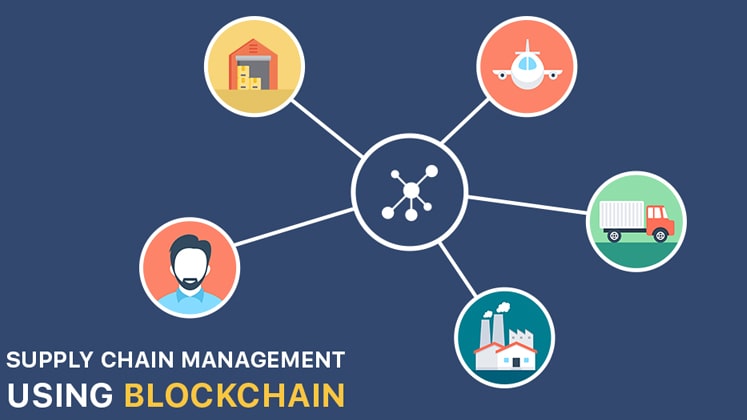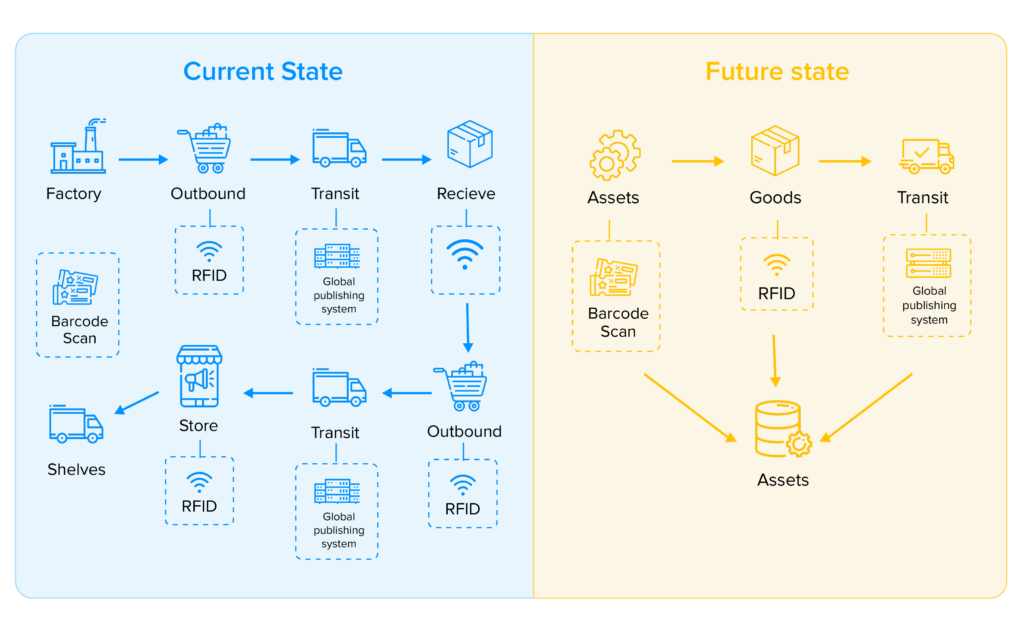Don & Alex Tapscott in Blockchain Revolution (2016) defined blockchain as “an incorruptible digital ledger of economic transactions that can be programmed to record not just financial transactions but virtually everything of value.”
What are the features that make it so bulletproof? The answer rests in its decentralised database, which means sensitive data is not kept in a single area. The records, on the other hand, are open to the public and easily verifiable by any user with access to the system. This decentralised method of data management is a safe solution that prevents anyone with nefarious intentions from damaging or stealing the data saved or the database itself. As a result, if implemented in areas such as financial services, healthcare, supply chain management, and so on, the method would be extremely beneficial.
Blockchain, like the apparel industry, has evolved massively ever since it was ideated. Introduced in the fashion world for the first time in the Shanghai Fashion Week 2016, the technology has today expanded its use cases in the direction of making the sector highly efficient and transparent.
Here are some of the ways which shows how blockchain clothing is changing the fashion industry:
Solves issues surrounding counterfeiting
The estimated value of offline and online counterfeiting of textiles, cosmetics, clothes, and footwear has reached $98 billion, according to the Global Brand Counterfeiting Report 2018.
By disseminating blockchain throughout the supply chain, customers can receive information about the product’s origin and travel through the use of an embedded chip. This provides clients with the necessary information to identify counterfeit products or those produced under unethically problematic conditions.
A brand that made a relevant step in this direction is BabyGhost. The firm launched its product and collaboration with Vechain at the Shanghai Fashion Week in 2017. In a bid to fight the fake version of high fashion designers’ products, they embedded an NFC or a QR code on each of Babyghost products. By also using an immutable ledger to record transactions, users could verify a product’s authenticity on VeChain’s application by simply scanning it.
Blockchain supports supply chain management for security, transparency and sustainability purposes

“Blockchain platforms enable the company to easily track individual products, even parts, along with the journey from the supplier to the customer.”
The potential of Blockchain in fashion retail comes with the capability to track physical or digital products throughout the lifecycle. This transparency in the supply chain tracking process offers producers insights into their value chain, giving them the guarantee of a proper third-party goods handoff and final product labelling.
Blockchain development companies, by tracking the assets’ progression, come with the potential to expand ethical and sustainable creation and consumption of a commodity on a global scale. The great quantity of supply chain information that can be obtained and stored via blockchain technology may represent a powerful asset for those companies that focus on sustainable products.
For instance, the fashion brands involved in the #WhoMadeMyClothes campaign by Fashion Revolution could gain authenticity by sharing the data concerning their sourcing and production processes. Indeed, by carrying out these transparency-led actions any brand would benefit in the eyes of the public opinion, gaining more legitimacy for their sustainability storytelling.
Martine Jarlgaard, a London-based designer brand, is a pioneer in this industry. In 2014, they partnered with Provenance to provide a unique digital token to each garment. All parties engaged in the production of that specific item of clothing were tracked, from farmers through designers and manufacturers to the end customer: each stage of the garment’s production process could be viewed on the Provenance website/application. Needless to say, all of this was made possible by blockchain technology once again.
Improves efficiency in the apparel industry

The number of stakeholders involved in a production and distribution line is currently equal to the number of individual records. The fashion industry, on the other hand, uses blockchain to bring the entire supply chain onto a centralised digital platform. This saves week of time spent determining the material’s origin and supply chain.
Nobody can lose, edit, or destroy a record once it has been added to the Blockchain, which is noted in bold in every Blockchain for entrepreneur guide.
Convenient royalty tracking
Blockchain technology makes it convenient to track royalty payments. It does not just allow the designers to develop an unchangeable proof of creation but it can also be used for creating and tracking trademarks, license designs in addition to royalty programs or sales originating through these designs.
The convenience is what makes Blockchain not just a key part of the changing fashion industry but also a prime technology and trends of the media and entertainment industry.
Blockchain technology as a marketing and branding tool
Not only by supporting supply chain information from upstream to downstream, but also by having that very information, fashion companies can create relevant branding and marketing strategies suitable for their target markets.
1trueid, an Italy-based blockchain technology firm that developed the MTM Shirt 4.0 in conjunction with Alessandro Gherardi, is a sophisticated company that needs to be acknowledged on this. They attached a particularly secure and water-resistant tag to each clothing, which was linked to the “Alessandro Gherardi Su Misura” app enabling a one-to-one interaction.
The goal was to develop a dynamic marketing approach that included both providing customers with a support chatbot and inviting product owners to unique Alessandro Gherardi events. These smart tags provided real-time data to the organisation, which was essential for improved understanding and planning of time offerings and circumstantial pricing.
Parting words
Customers can see and comprehend the complexity that goes into bringing a product to market because of blockchain apparel technology and its unique operating system. This not only changes their impression of worth, but it also reduces the vast number of things thrown away after a year of use.
When Blockchain app developers use it correctly, it may assist the fashion industry not only confirm their commitment to sustainability and quality, but also retain the margins and revenues necessary to stay afloat, no matter how quickly the fashion trend changes.
You may also like: LYCRA Company Introduces Lyrca® Dual Comfort Technology for Ready-to-wear & Wovens













